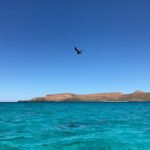Mexico’s Yucatan Peninsula is home to everything one associates with a tropical paradise: spectacular white coral sand beaches, clear turquoise waters, emerald waves, lush green jungles, impressive ancient Mayan ruins, colorful colonial towns., and stunning cenote diving…All blanketed by the Caribbean blue skies.
No wonder, the Yucatan Peninsula has long been a popular destination with well-known towns on the main tourist trail like Cancun, Tulum, and Playa del Carmen. However, one significant feature most visitors to the peninsula are not aware lies buried deep below the surface of a small pueblo with just a few thousand residents and a typical local vibe. This particular town, Chicxulub Pueblo, is the epicenter of one of the most tremendous scars on our planet, the Chicxulub crater, named after the pueblo itself.
The Chicxulub crater, 180 kilometers in diameter, was created when the notorious dino-killing meteorite struck the Earth some 66 million years ago. The gigantic meteorite impact did not only play a significant role in extinguishing the dinosaurs, but it also initiated the formation of a strikingly beautiful geological masterpiece, the world’s largest submerged cave system, called cenotes.
Fancy a glimpse of Mayan underworld? Read on, and deep dive in one of the most bizarre alien worlds on our planet!
Jump to:
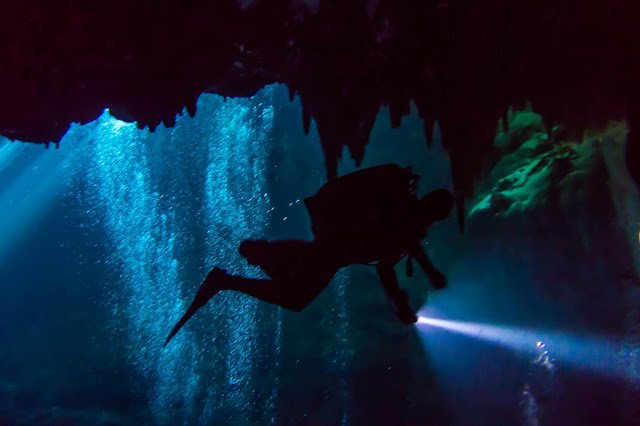
What is a cenote?
What’s a cenote you ask? A cenote is, simply put, a natural sinkhole formed as a result of collapsed bedrock that opens up into underground lakes and rivers. These geological features were formed by the gradual dissolving of the limestone bedrock. Due to the naturally-acidic rainwater filtering through the highly porous subterranean rock over thousands of years, the surface caves in, and sometimes the roof collapses and forms a hole revealing the hidden pools of groundwater underneath.
The Yucatan Peninsula is littered with an estimated over 6,000 cenotes, solely less than a half of those identified or explored. And about a thousand cenotes cluster together on the edge of the impact crater to form a semi-circle arc, a ring of cenotes. A discovery that was only made relatively recently in the late-1970s linking these unusual formations to the fate-altering Chicxulub impactor. It is believed that the force of the impact was so immense that rock turned into liquid, soot and dust blasted into the atmosphere causing extreme global cooling, and consequently, years of darkness wiped out the majority of life on Earth.
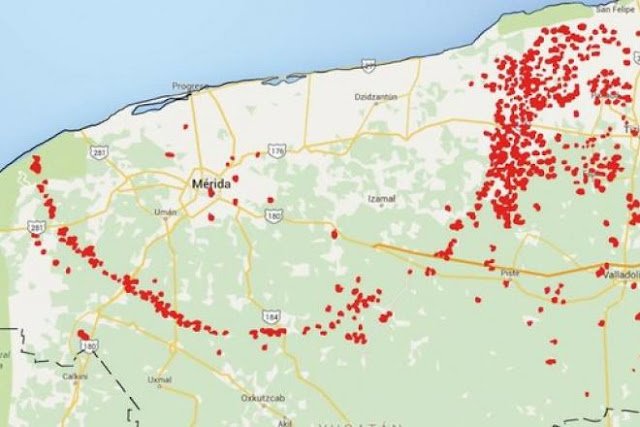
A typical day of cenote diving
If it hadn’t been for the impact event, a dinosaur might be driving the pickup truck through the dense jungle today, not an ordinary example of homo-sapiens. Owing to the drowsiness of having woken up very early, my brain is a tad too feeble to grasp them all that my knowledgeable dive guide tells about the cenotes and dives ahead of us while driving on the sacred Mayan land.
Scuba diving Cenote El Pit
The picturesque cenotes served Mexico’s ancient Mayan civilization as a major source of water supply, and today as a major source of income, I realize as my guide pays the entrance and scuba diving fees. We then proceed to the cenote El Pit, one of the legendary cenotes for scuba diving. Once there, we quickly don our equipment intrigued in anticipation of what’s coming, and climb down the wooden steps into the narrow mouth of the cenote.

Mayans believed that the deep azure, mysterious cenotes were the portals to the underworld, as such they were often used for sacrifices. It is easy to see why they held that belief once you step into their dark and sacred underwater labyrinth, and behold the intensity of the precious beauty. One doesn’t need to be Maya to feel awe.
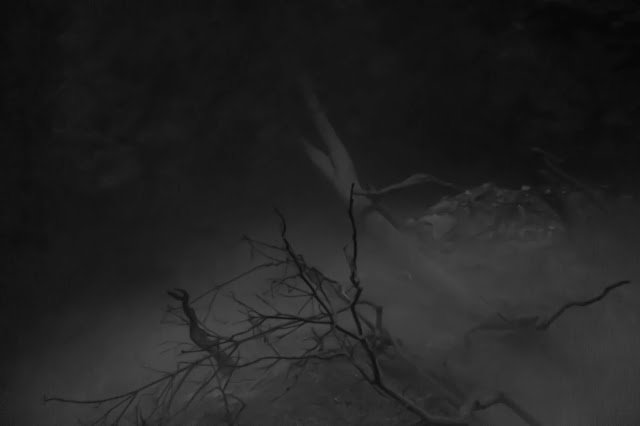
Scuba diving gives us the freedom to defy gravity and move in a three-dimensional space, like an astronaut exploring distant planets, and indeed the Mayan underworld is mysteriously alien. I am in an eerie landscape beneath the surface, swimming among dangling tree roots, fish suspended in blue space under the delicate shaft of dancing sunlight, and a frozen forest with petrified tree trunks sticking out of a subterranean cloud. A smoky cloud. This could be very well a scene ripped out from an Alfred Hitchcock film.

The mind-blowing experience of cenote diving through a halocline layer
Let me explain this horror movie scene a bit more in-depth. In some privileged cenotes, you can encounter a ghostly hazy layer, either in the form of a halocline layer or a smoky hydrogen sulfide cloud. In the cenote El Pit, you can find both phenomena at 12-18 meters and 27 meters respectively.
The visibility in a cenote is virtually unlimited, thanks to the clearest groundwater you’ve ever seen. I can attest to that. When rainwater filters through the deep layers of limestone, no particles remain in it. The water becomes so clear, so sharp, so smooth that you might feel as if you’re flying in the sky. BUT, that is not the whole story.
Besides freshwater, saltwater can also seep in from the ocean via underground cracks into a cenote. When two bodies of water with different temperatures or densities mix, a crystalline layer, called halocline, is formed. This is where your vision gets blurred, the light from your torch gets absorbed and only seen as a faint ray. In a fraction of a second, you literally get as blind as a bat. Don’t panic, keep calm, and take a deep breath. The blurry layer gives way to clear water within a few meters and everything becomes as sharp as before. Well, until you hit the smoky cloud layer further down below.

An opaque cloud layer is formed with the help of specialized bacteria that diligently decompose organic materials and produce hydrogen sulfide, which then concentrates on the surface of the halocline forming a blanket of the highly toxic gaseous cloud, capable of killing oxygen-breathing organisms like us. Pretty thrilling, huh?!

Scuba Diving Cenote Dos Ojos
After the euphoric El Pit dive, the next cenote on agenda is a very popular one among divers and snorkelers alike, Dos Ojos. As the name ‘two eyes’ indicates this cave system provides us with two different entrances, and we conduct one dive into each eye. Snaking our way around stalactites and stalagmites in the silent underworld, in the clearest water with a perfect temperature caressing my body gently, I get hooked on cenote diving.
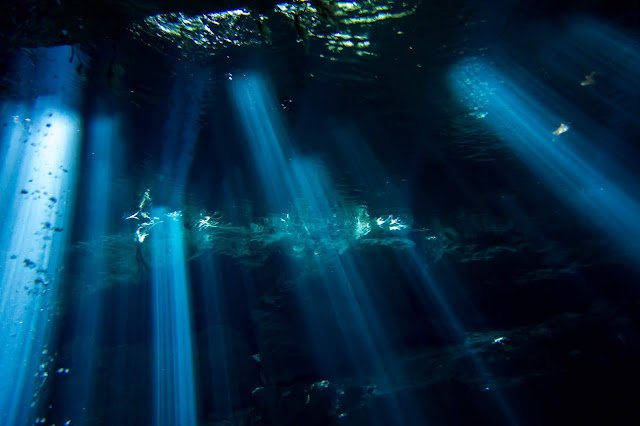
Give me more cenote diving
Cenote Chikin Ha
In the following days, determined to explore more cenotes, I would dive the cenote Chikin Ha, another stunning cave cenote but much less crowded than Dos Ojos, plus it’s one with a halocline layer.
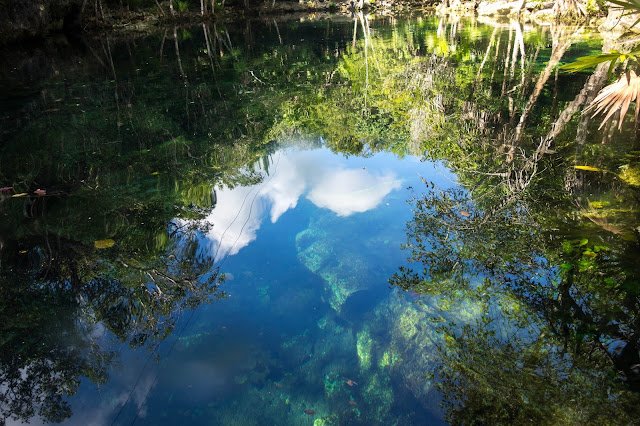
While pushing forward into the veins of our planet, we enter and leave the halocline layer in Chikin Ha many times. Daylight slowly fading away into darkness and revealing a mysterious alien world, I wonder if any of the fossils on the cavern walls belonged to a dinosaur. Regardless, I silently promise to visit them again in the surreal Mayan underworld in the nearest possible future. The final dive of my visit this time would be to Cenote Angelita.
Cenote Angelita
Cenote Angelita with the steep vertical walls and over 3-meter thick hydrogen sulfide cloud at 30 meters that you can actually penetrate through turns out to be one of the most exhilarating, otherworldly dives I’ve ever done, partially thanks to the crocodile guarding the portal to his prehistoric cousins’ underworld.
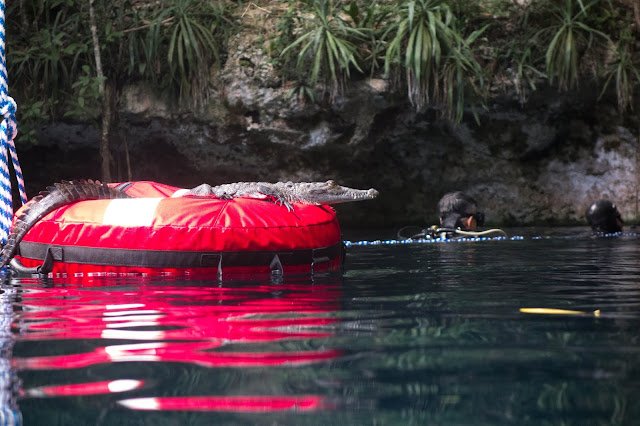
But, quite literally the mind-blowing thing about Angelita is the huge, seemingly impenetrable, green-greyish barrier that simply hangs in the water, absorbing all the light, actually swallowing anything plunged into the murky cloud. My legs, waist, and even hands are instantly lost to me in the cloud, and a nanosecond later my mind is gone. Disoriented, blinded…I lose all my senses. It’s the ultimate mental challenge not to panic, not to hit the surface like a Polaris missile on launch.
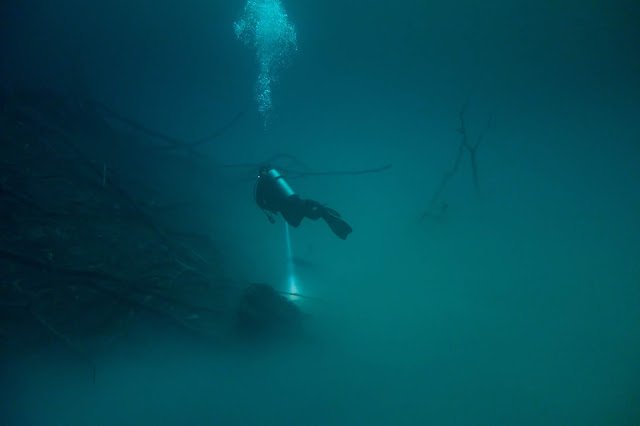
Thank God, mission accomplished, then I am found again coming through the other side of the cloud to pitch-black darkness. All we have is a minute or two at this depth, and soon, too soon, we penetrate through the eerie cloud of hydrogen sulfide again to start our ascend slowly. Mesmerized by the tree emerging from seemingly nowhere, we, the big kids, enjoy exploring our playground for as long as possible.
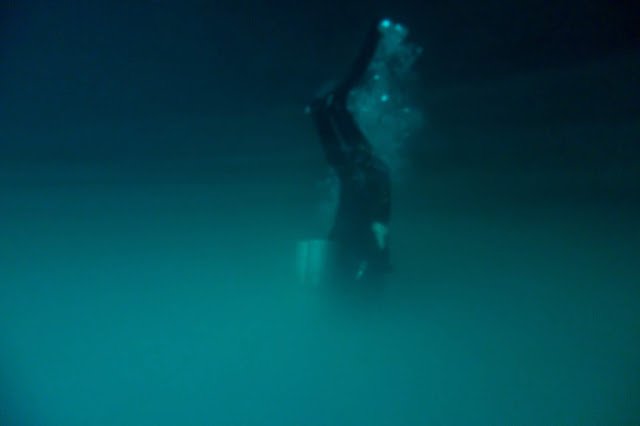
As we surface with frantic feelings, I keep an eye out for the reptile guardian and repeat my promise: I’ll be back.
Cenote Diving in pictures
Here are a few more impressions of from my dives in Cenote El Pit, Cenote Dos Ojos which I dived with a dive center from Tulum (though later I found out they are all accessible from Playa del Carmen too).
I dived the Cenote Chikin Ha and Cenote Angelita with a dive center from Playa del Carmen.
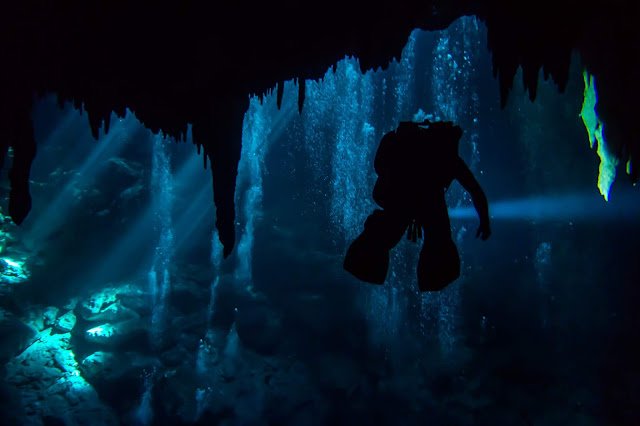
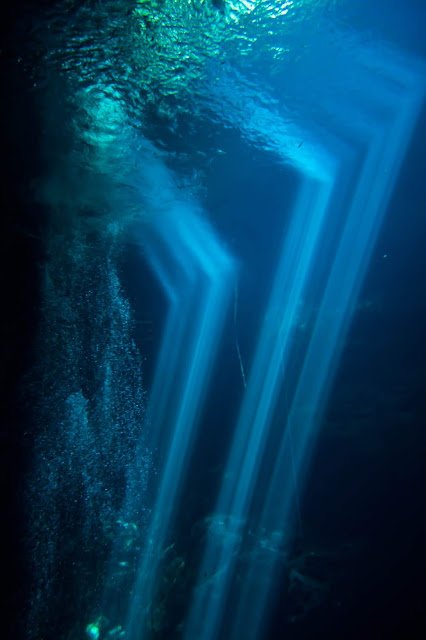
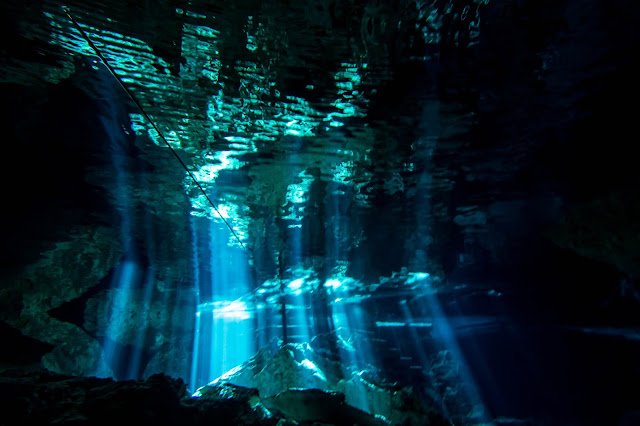
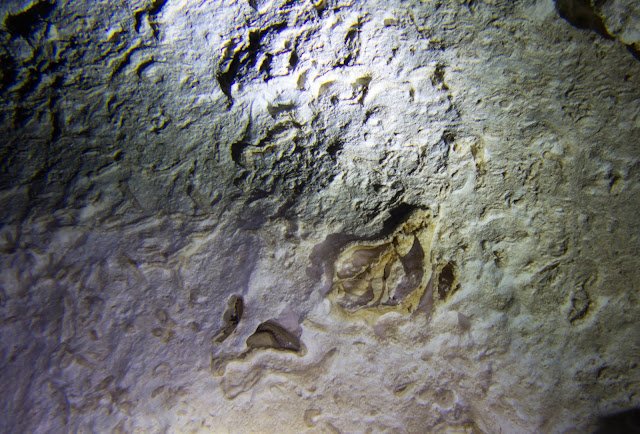
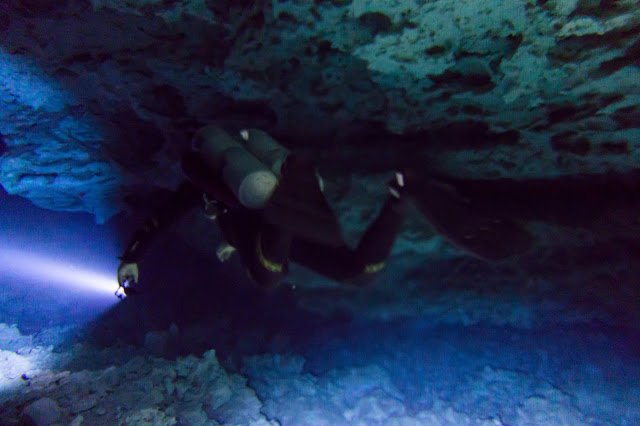
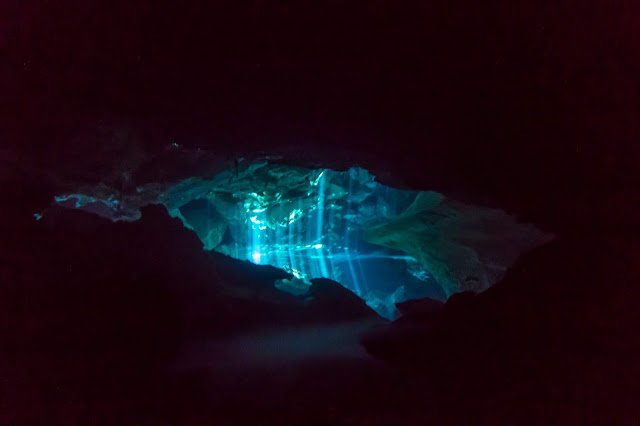
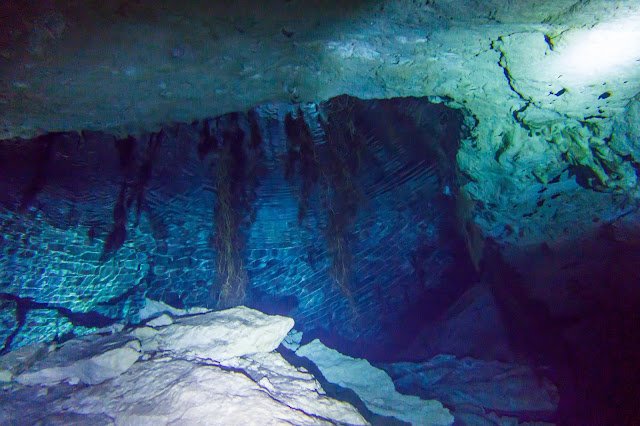
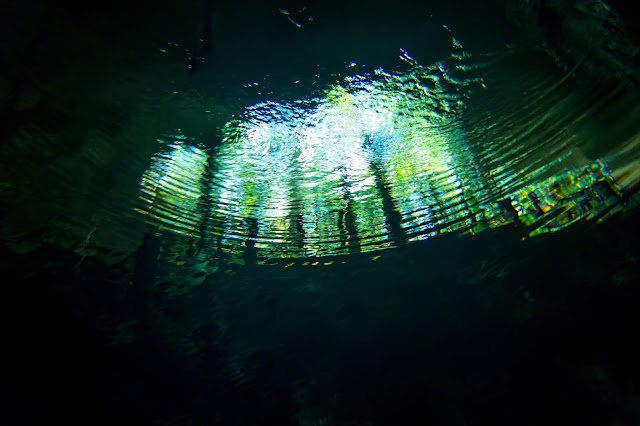
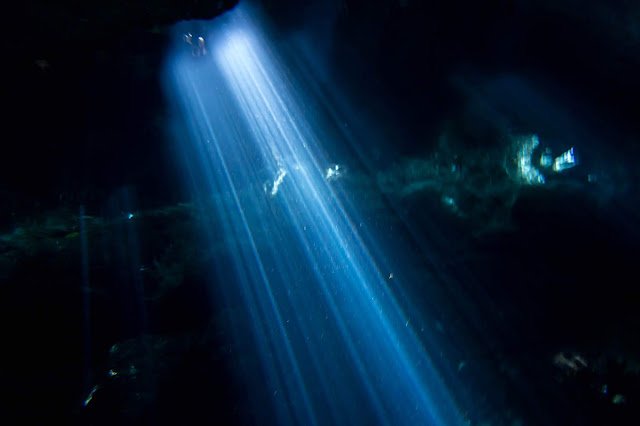
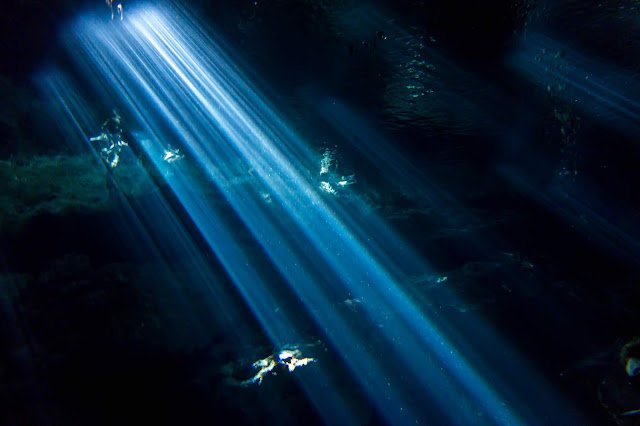

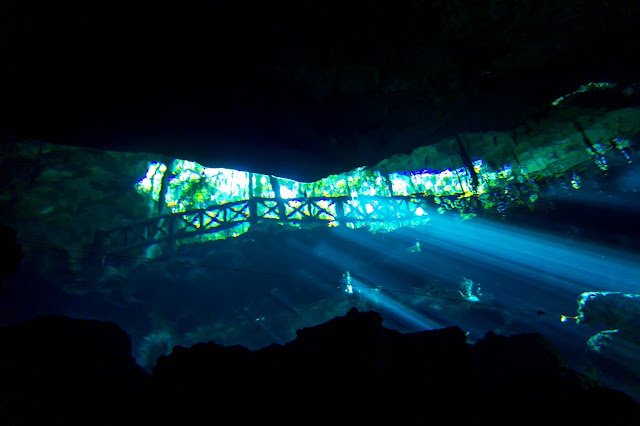
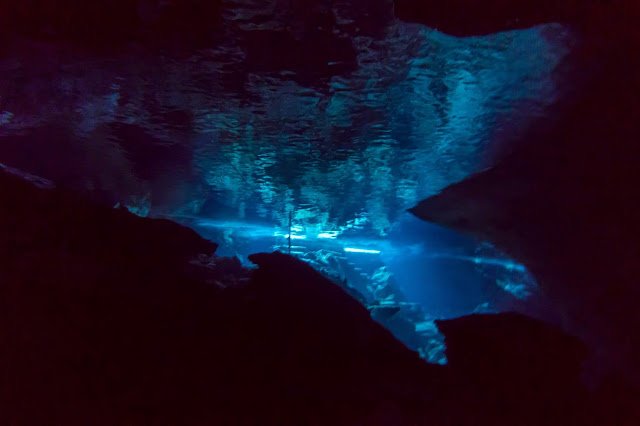


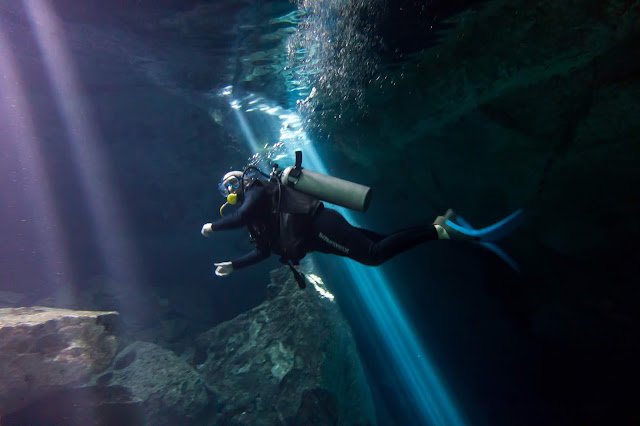
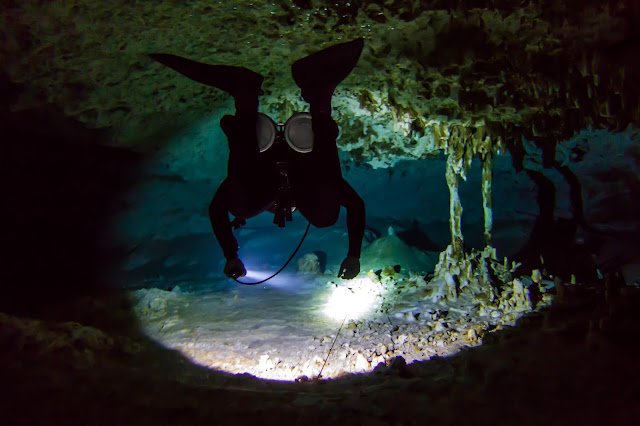
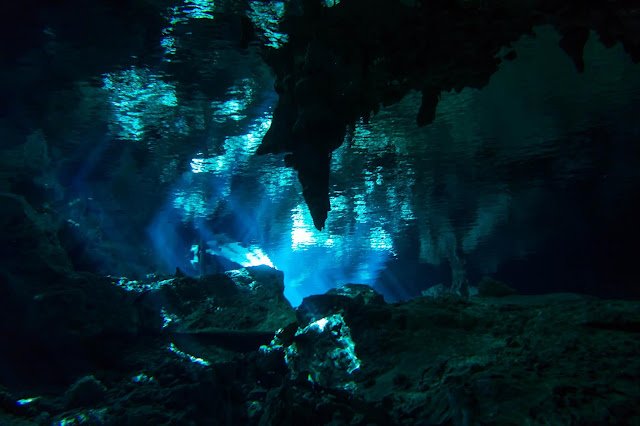
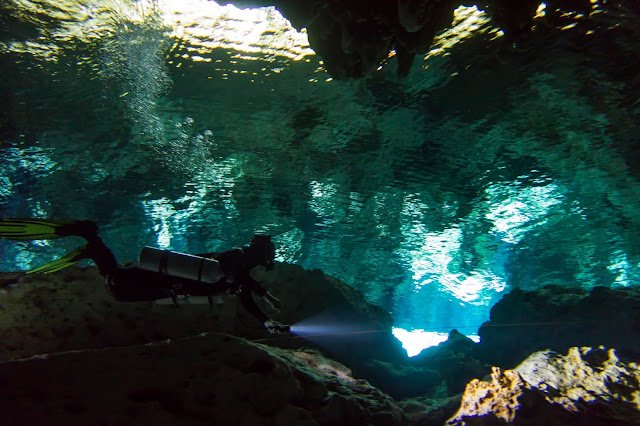
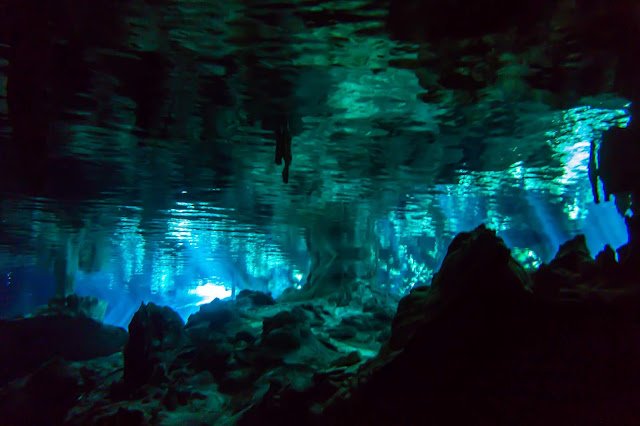

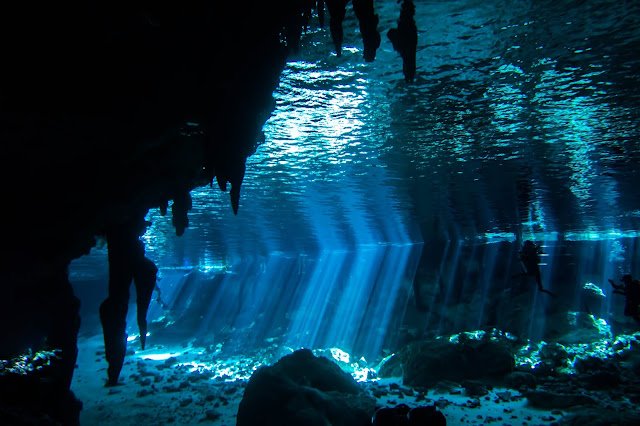
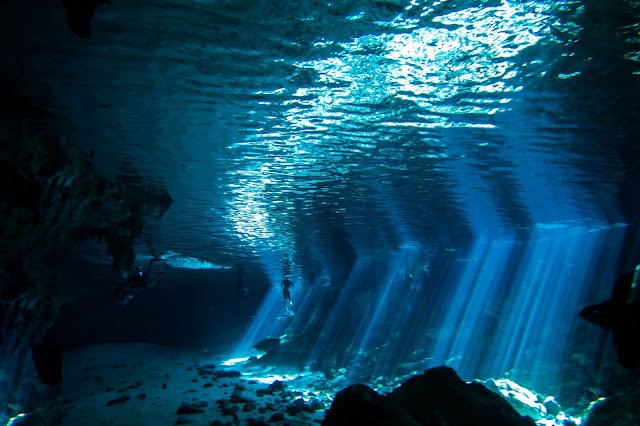
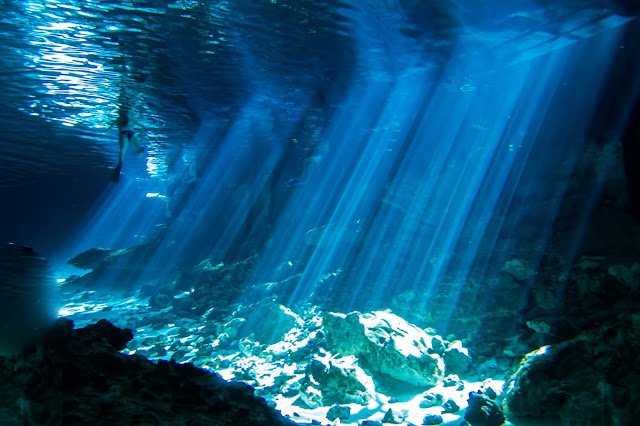
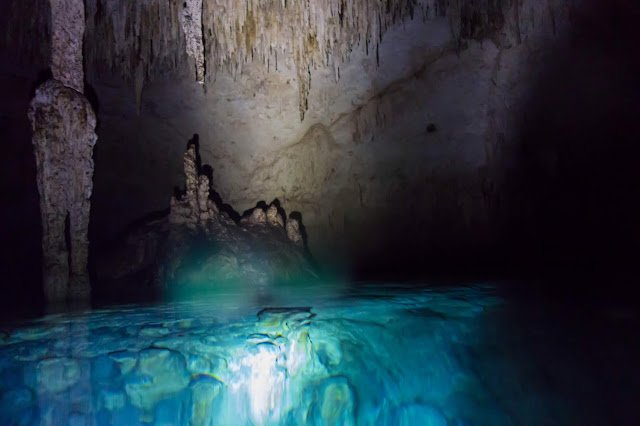
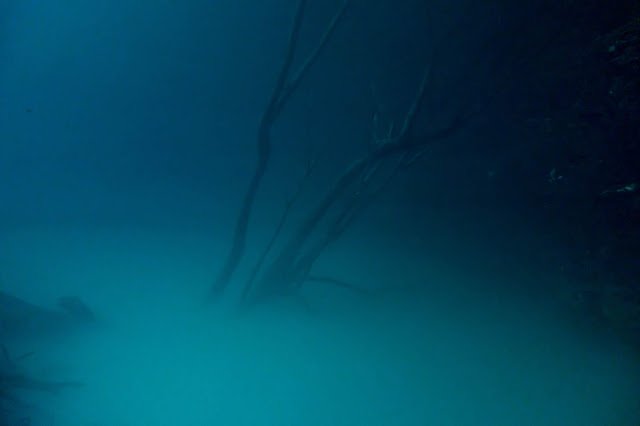
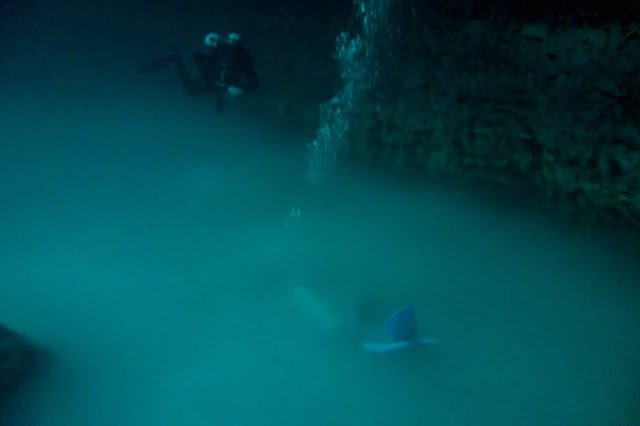
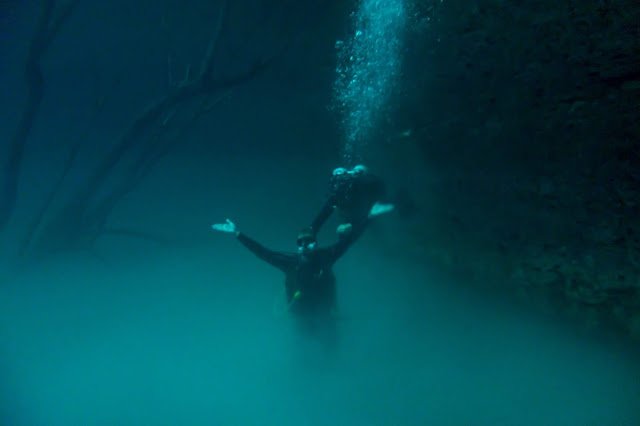
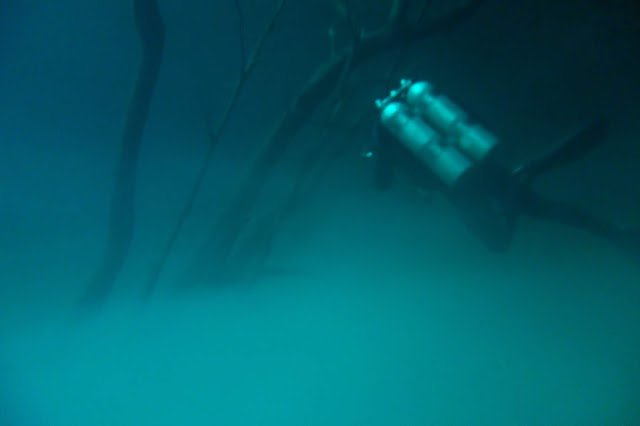
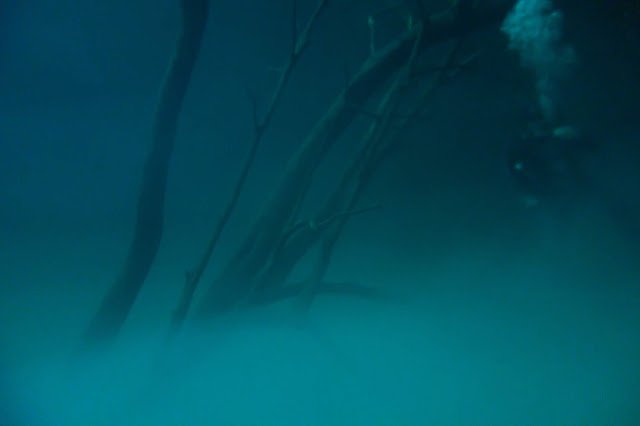
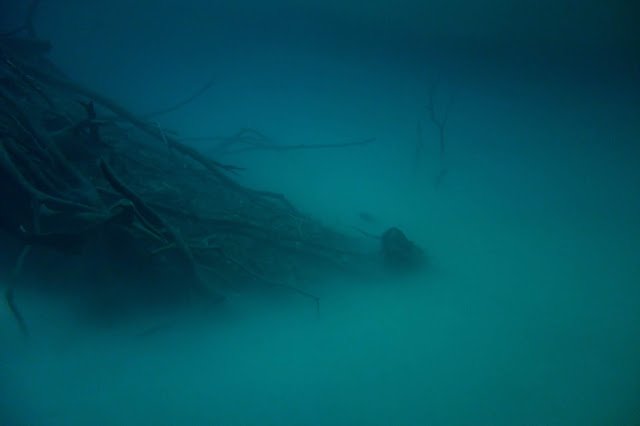
As mentioned before, no need to split your time between Tulum and Playa del Carmen to access the cenotes. You can perfectly base yourself in Playa del Carmen and enjoy both stunning cenote dives and snorkeling, plus ocean diving.
Snorkeling cenotes
Non-divers, no worries. There are also plentiful cenotes suitable for swimming and snorkeling, some inhabited by colorful fish, some have cliffs to jump from, or even built-in zipline.
While there will be a dedicated post on snorkeling, here’s a sneak peek at what you can expect when swimming in cenotes.
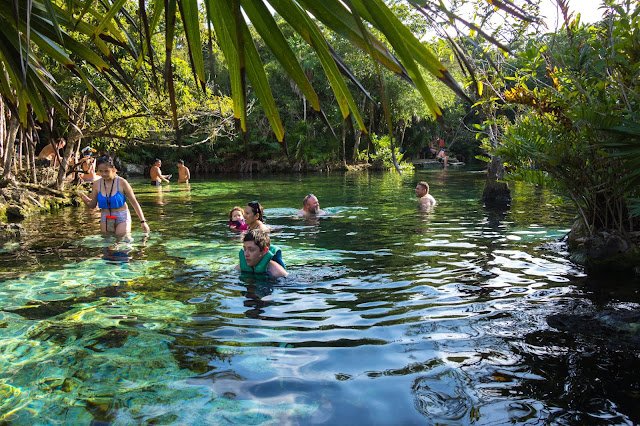
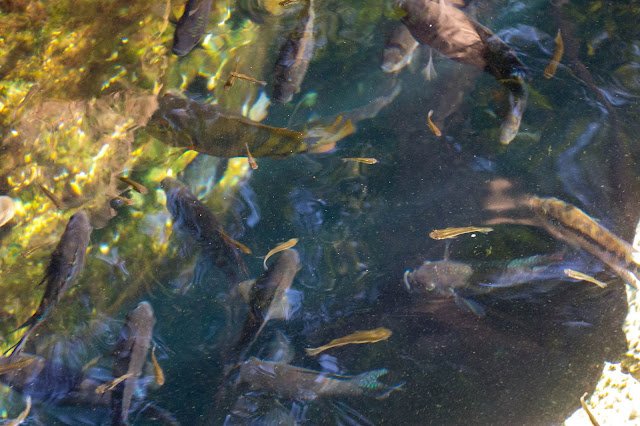
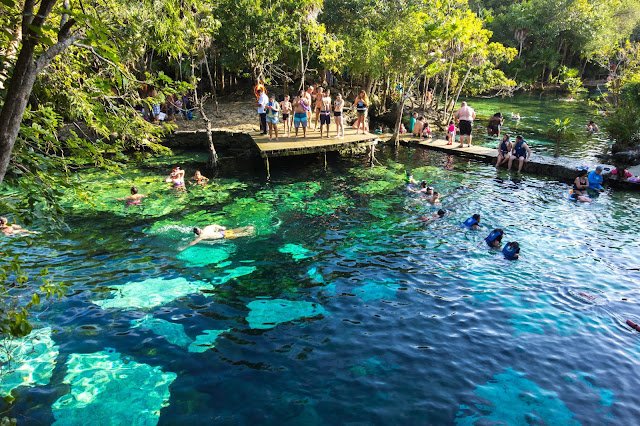
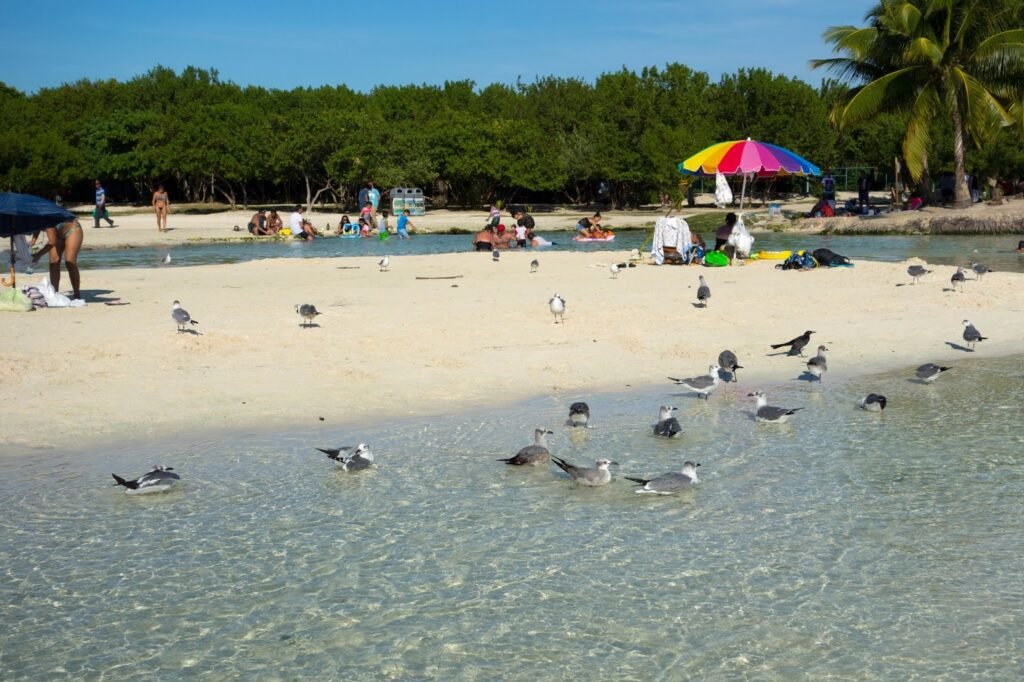
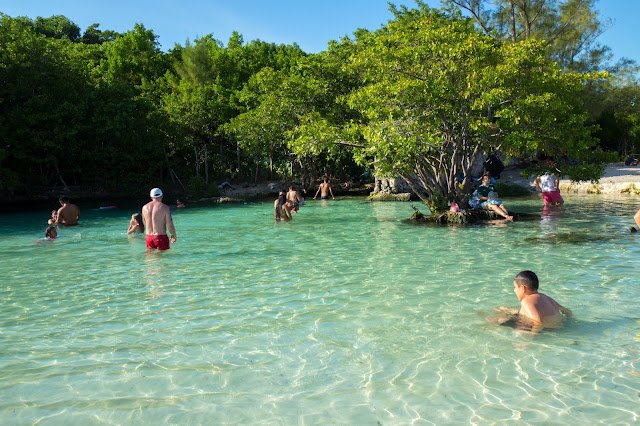
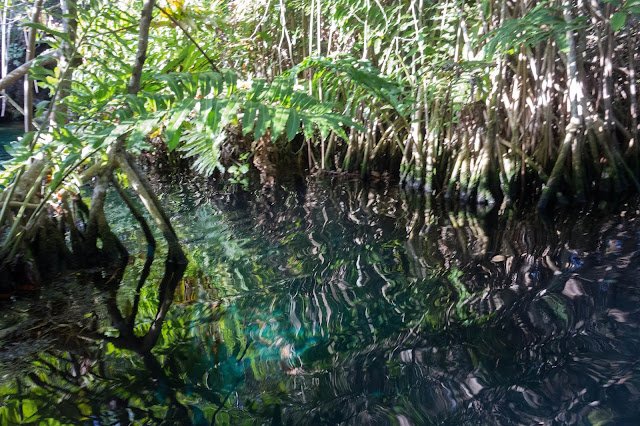
Final words about diving cenotes
Update 2024: This is a wrap of the story of my cenote diving experience on my first visit to Mexico in 2018. You can watch the compiled video clip on YouTube at this link: https://youtu.be/1NKEcmkyB68
As I promised back then, I was back spending all of 2022 in Mexico diving and snorkeling more of the stunning cenotes of the Yucatan Peninsula. To name some: Cenote Zapote, Casa Cenote, Cenote Eden, Cenote Tajma Ha, and a few hidden ones. It’s fair to say that I have virtually dived and/or snorkeled the cenotes open to the general public from A (as in Cenote Angelita) to Z (as in Zapote).
Stay tuned for new posts that focus on the practical side of cenote diving and snorkeling! Leave a comment below if you have any questions!


